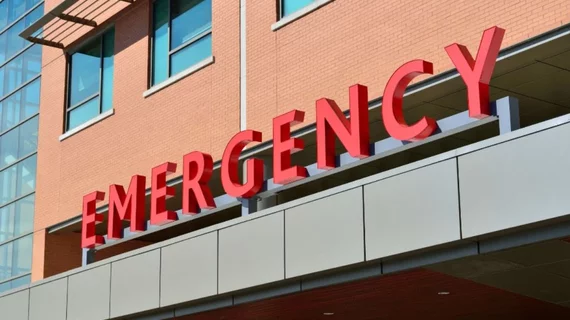2 hours in the ER enough to rule out risky arrhythmias in most syncope patients
The majority of patients who present to the emergency department (ED) after fainting likely don’t need to be monitored for more than two hours to rule out any dangerous underlying arrhythmias, Canadian researchers have found.
Fainting, or syncope, accounts for up to 3 percent of ED visits and around 1 percent of subsequent hospitalizations from the ED, Venkatesh Thiruganasambandamoorthy, MBBS, MSc, and co-authors wrote in Circulation Jan. 21. Fainting patients are traditionally held for eight to 12 hours in the hopes of eliminating any heart problems that might have triggered the event, but the authors said most arrhythmias come and go quickly, making it difficult to attribute syncope to a singular cause.
“The most important objective of ED evaluation is to exclude a serious underlying condition such as arrhythmia, acute cardiac ischemia, pulmonary embolism or internal hemorrhage,” they wrote. “Previous studies have estimated that one-third to one-half of these serious conditions, particularly arrhythmias, are missed during ED evaluation and become evident only after ED disposition.”
Thiruganasambandamoorthy and colleagues said half of all syncope patients across Canada—where they based their study—are admitted for heart rhythm monitoring after their event. Still, just a fraction of those patients will experience another dangerous arrhythmia, MI or death within a month of fainting.
The researchers developed the Canadian Syncope Risk Score (CSRS) in a previous study to help stratify syncope patients in Canada and identify which individuals are at the highest risk of a life-threatening event. Using the CSRS classifications of either low-, medium- or high-risk, Thiruganasambandamoorthy’s team enrolled 5,581 syncope patients and followed up with them for a month.
Of the study population, 417 patients, or 7.5 percent, suffered serious outcomes, the authors reported. Almost half of those events—experienced by 3.7 percent of the study population—were arrhythmic, including 161 arrhythmias, 30 cardiac device implantations and 16 unexplained deaths. Nearly three-quarters of patients were classified as CSRS low-risk, 19 percent were classified as medium-risk and 7.1 percent fell into the high-risk category.
Thiruganasambandamoorthy et al. found that half of arrhythmic outcomes were identified within two hours of ED arrival in low-risk patients and within six hours in medium- and high-risk patients. In all, 91.7 percent of arrhythmic outcomes among medium- and high-risk patients, including all ventricular arrhythmias, were identified within 15 days of the index event.
“The residual risk of arrhythmic outcomes beyond two hours of observation is very low (0.2 percent) among low-risk CSRS patients,” the researchers wrote. “Among medium- and high-risk patients, the risk of arrhythmia after six hours of ED observation was 4.4 percent. Such monitoring intervals appear to us to be clinically sensible and to represent an appropriate balance between excessive testing versus diagnostic yield, although we recognize that clinicians in different healthcare jurisdictions may select different thresholds.”
Thiruganasambandamoorthy et al. said no low-risk patients died during the course of their study, but 0.9 percent of medium-risk patients and 6.3 percent of high-risk patients suffered unexplained deaths. They suggested outpatient cardiac rhythm monitoring for 15 days following syncope in patients at a designated CSRS threshold, calling the strategy “an appropriate tradeoff between diagnostic yield for arrhythmia and health resource utilization.”
“Not surprisingly, the likelihood of arrhythmia detection is highest immediately after syncope, and this likelihood decreases over time,” the authors wrote. “The results of our study support brief monitoring in the ED for two hours for CSRS low-risk patients and six hours for medium- and high-risk patients, followed by selective admission.”

